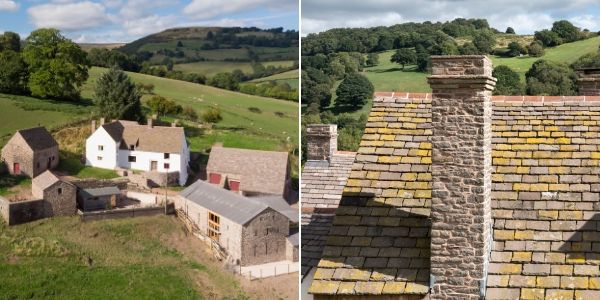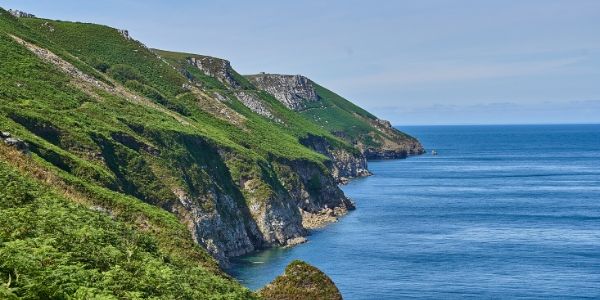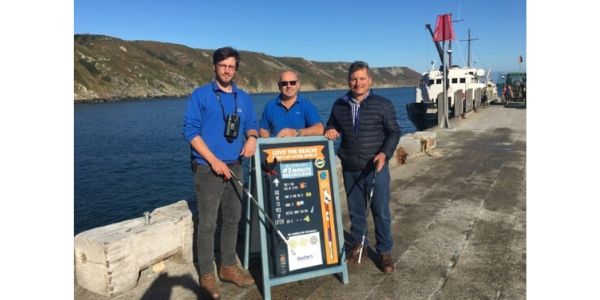Conservation is at the heart of what we do, and this extends way beyond our role as revivers of heritage to our care of the natural environment. Many of the traditional methods and materials that we use are in themselves inherently more sustainable than their modern equivalents, and we set out to conserve what is already there wherever possible.
 Llwyn Celyn, Monmouthshire
Llwyn Celyn, Monmouthshire
Our Welsh Landmark Llwyn Celyn has an 85-tonne stone roof which includes a mixture of re-used tiles and others newly quarried just a few miles away. It should last at least 100 years, and maybe three times that long. Llwyn Celyn also held an extensive hedge planting programme, to create a rich environment for wildlife and to develop native species.
We are looking critically at how to make the running and maintenance of our buildings more environmentally sustainable. We have changed the energy supply to the vast majority of our properties to renewables and are focusing on improving their warmth and energy efficiency as part of our rolling maintenance programme. This includes improving insulation, draught proofing and installing low-carbon heating systems.
Explore our Landmarks with electric vehicle charging facilities by clicking below.
Landmarks with EV charging
Our cleaning materials have also been switched to more ecologically friendly brands. For our printed materials such as leaflets, newsletters and Handbooks, we always print on Forest Stewardship Council-certified paper and recently released a digital version of the 250-page Landmark handbook. Small steps perhaps, but they all contribute to our commitment to make our buildings and operations as ethical and sustainable as we can.
Ecological surveys inform the programme before we undertake any restoration work, often meaning that we adapt our plans to accommodate wildlife, such as roosting bats, nesting owls, crested newts or foraging badgers. We adjusted the restoration programme of the Llwyn Celyn site when a colony of lesser horseshoe bats, a rare and protected species, was found in the farmhouse. We converted the cider barn into bespoke bat-friendly accommodation, and work on the main building only resumed once they had adapted to their new home.
 Lundy ©Gabriel Gilson
Lundy ©Gabriel Gilson
On Lundy pictured above, we are acutely aware of environmental sustainability as all resources have to be brought over by boat. We have upgraded our water treatment plant so that we are self-sufficient – using rainwater and no longer reliant on importing 32,000 plastic bottles of water a year from the mainland. We are very proud to have achieved 'plastic free' status on Lundy; we ask guests to take all their plastic away with them and we recycle as much of the rest as we can. We also provide free accommodation for the volunteers of the Lundy Field Society. They undertake conservation tasks including the removal of invasive plant species to encourage the revival of our unique native plant, the Lundy cabbage.

Lundy warden Dean Jones, general manager Derek Green and Mark Lavington from
Boshers Ltd on the jetty at Lundy. ©Sian Scott
 Guillemots on Lundy ©Stuart Leavy
Guillemots on Lundy ©Stuart Leavy
Since 2002 our work in partnership with the RSPB, Natural England and National Trust on the eradication of invasive rats has been rewarded by a tripling of the total number of breeding seabirds. Puffins now number 375, from a low of just 13 birds, and pairs of Manx shearwaters have risen from 297 to 5,504. In Autumn 2019, Landmark signed a new 50-year lease with the National Trust, which owns the island. The lease solidifies each organisation’s commitment to continuing to care for Lundy, ensuring that its special character and the experience which so many cherish can continue.